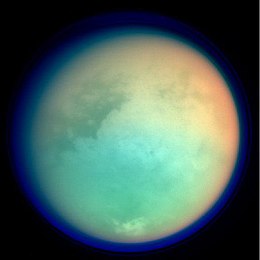shawn001
Well-Known Member
FYI
Why these people denying evolution can breath Oxygen in the first place.
Scientific American
The Origin of Oxygen in Earth's Atmosphere
The breathable air we enjoy today originated from tiny organisms, although the details remain lost in geologic time
"So how did Earth end up with an atmosphere made up of roughly 21 percent of the stuff?
The answer is tiny organisms known as cyanobacteria, or blue-green algae. These microbes conduct photosynthesis: using sunshine, water and carbon dioxide to produce carbohydrates and, yes, oxygen. In fact, all the plants on Earth incorporate symbiotic cyanobacteria (known as chloroplasts) to do their photosynthesis for them down to this day.
For some untold eons prior to the evolution of these cyanobacteria, during the Archean eon, more primitive microbes lived the real old-fashioned way: anaerobically. These ancient organismsand their "extremophile" descendants todaythrived in the absence of oxygen, relying on sulfate for their energy needs.
The Origin of Oxygen in Earth's Atmosphere: Scientific American
Introduction to the Cyanobacteria
Architects of earth's atmosphere
Cyanobacteria are aquatic and photosynthetic, that is, they live in the water, and can manufacture their own food. Because they are bacteria, they are quite small and usually unicellular, though they often grow in colonies large enough to see. They have the distinction of being the oldest known fossils, more than 3.5 billion years old, in fact! It may surprise you then to know that the cyanobacteria are still around; they are one of the largest and most important groups of bacteria on earth.
Introduction to the Cyanobacteria
Early 'see-sawing' Earth experienced hazy shades of life
" Earth's early atmosphere fluctuated between 'organic haze' and a 'haze-free' environment similar to that of Saturn's moon, Titan, a new study has revealed.
And this switch over 2.5 billion years ago was the result of intense microbial activity and would have had a profound effect on the climate of the Earth system.
Research, led by experts at Newcastle University, UK, revealed that the Earth's early atmosphere periodically flipped from a hydrocarbon-free state into a hydrocarbon-rich state."
Early 'see-sawing' Earth experienced hazy shades of life - Yahoo! News India
Fossil raindrops reveal early atmosphere
Fossil raindrops reveal early atmosphere News in Science (ABC Science)
Can you breath Methane, or primarily natural gas?
Your breathing Oxygen right now because the bacteria called cynobacteria evolved photosynthesis and changed the earth atmophere. Our atmophere today is a direct result of evolution. Look it up.
Which is one reason we landed on Saturn's moon titan, because it has similar organic chemistry to the early earth.

Markymark, did you know the oxygen your breathing right now is because of evolution of cynobacteria 3.8 billion years ago?
There is a very high probablity other life exists.
